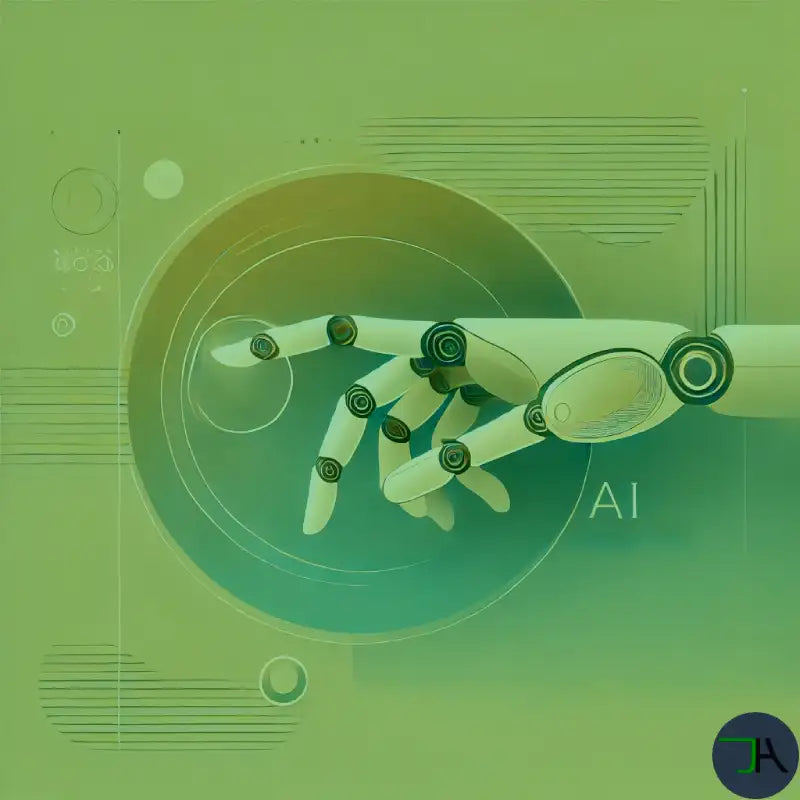Disclosure: This post may contain affiliate links, meaning Chikara Houses get a commission if you decide to make a purchase through our links, at no cost to you. Please read our disclosure for more info.
Content Disclaimer: The following content has been generated by a combination of human and an AI language model. Content is images, text and video (if any). Please note that while we strive to provide accurate and up-to-date information, the content generated by the AI may not always reflect the most current news, events, or developments.
The Future of AI Automation: Unprecedented Growth in the Coming Years
Artificial Intelligence (AI) automation is on the brink of revolutionizing various industries, paving the way for a more efficient and technologically advanced future. With market projections showing exponential growth, businesses and consumers alike must understand how AI will shape the world in the coming years.
AI Automation Market Growth Projections
The AI automation market is expected to experience an unprecedented surge, growing from $214.6 billion in 2024 to $1,339.1 billion by 2030, boasting a Compound Annual Growth Rate (CAGR) of 35.7% (MarketsandMarkets).
Moreover, the Intelligent Process Automation (IPA) segment, which integrates AI with automation to streamline business operations, is forecasted to increase from $17.34 billion in 2024 to approximately $67.73 billion by 2034, with a CAGR of 14.6% (Precedence Research).
Key Drivers of AI Automation Growth
- Advancements in Computational Power – Faster and more efficient processors enable sophisticated AI models.
- Data Availability – Increased data collection enhances AI capabilities.
- Industry Adoption – Sectors such as healthcare, finance, and manufacturing are investing heavily in AI.
- Cost Reduction & Efficiency – AI minimizes operational costs and improves productivity.
- Government and Enterprise Investments – Rising funding and policy support drive innovation.
Industries Leading AI Automation Adoption
1. Healthcare
- AI-powered diagnostics and robotic-assisted surgeries enhance patient care.
- Automated administrative tasks improve hospital efficiency.
2. Finance
- AI-driven fraud detection enhances security.
- Automated trading and customer support improve service delivery.
3. Manufacturing
- AI-enabled robotics optimize production lines.
- Predictive maintenance reduces downtime.
4. Retail and E-commerce
- AI personalization improves customer experience.
- Automated supply chain management ensures efficiency.
5. Transportation and Logistics
- Autonomous vehicles streamline deliveries.
- AI-powered logistics enhance route planning.
Challenges and Considerations in AI Automation
While AI automation presents immense opportunities, challenges must be addressed:
- Job Displacement – The shift towards automation may impact employment in various industries.
- Data Privacy & Security – AI systems must ensure robust data protection.
- Bias & Ethical Concerns – AI decision-making must be transparent and fair.
- High Initial Costs – AI adoption requires significant investment.
The Road Ahead: AI’s Role in Economic Transformation
AI automation is not just a technological advancement but a catalyst for economic transformation. By integrating AI with business processes, companies can enhance efficiency, reduce costs, and unlock new growth opportunities. Governments and industries must collaborate to ensure responsible AI adoption while fostering innovation and inclusivity.
Frequently Asked Questions (FAQs)
1. How fast is AI automation growing? AI automation is projected to grow at a CAGR of 35.7%, expanding from $214.6 billion in 2024 to $1,339.1 billion by 2030.
2. Which industries benefit the most from AI automation? Industries such as healthcare, finance, manufacturing, retail, and logistics are leading AI adoption due to its efficiency-enhancing capabilities.
3. What is Intelligent Process Automation (IPA)? IPA integrates AI and automation technologies to streamline and optimize business processes, reducing manual effort and improving accuracy.
4. Will AI automation replace jobs? AI may displace certain jobs but will also create new opportunities in AI development, maintenance, and oversight.
5. What are the biggest challenges of AI automation? Key challenges include job displacement, data security, ethical concerns, and high implementation costs.
6. How can businesses prepare for AI automation? Businesses should invest in AI training, adopt AI-driven tools, and ensure ethical AI integration to stay competitive.
Conclusion
AI automation is rapidly evolving, with significant impacts on industries and the economy. As technology advances, businesses and policymakers must balance innovation with ethical considerations. The future of AI automation holds immense promise, driving efficiency, innovation, and economic growth globally.
Discover also about Chikara Houses:
9 Rules Rooms:
- Inspections, temporary guests
- Free Cooking, evasion through cooking
- Free Space/Sharing Philosophy
- Minimalistic Furniture
- No Friends in room
- World Map
- No Chemical against pest
- Be clean With Yourself
- No Shoes Rules Origins
5 Needs Rooms:
#AIAutomation #FutureOfAI #TechTrends





